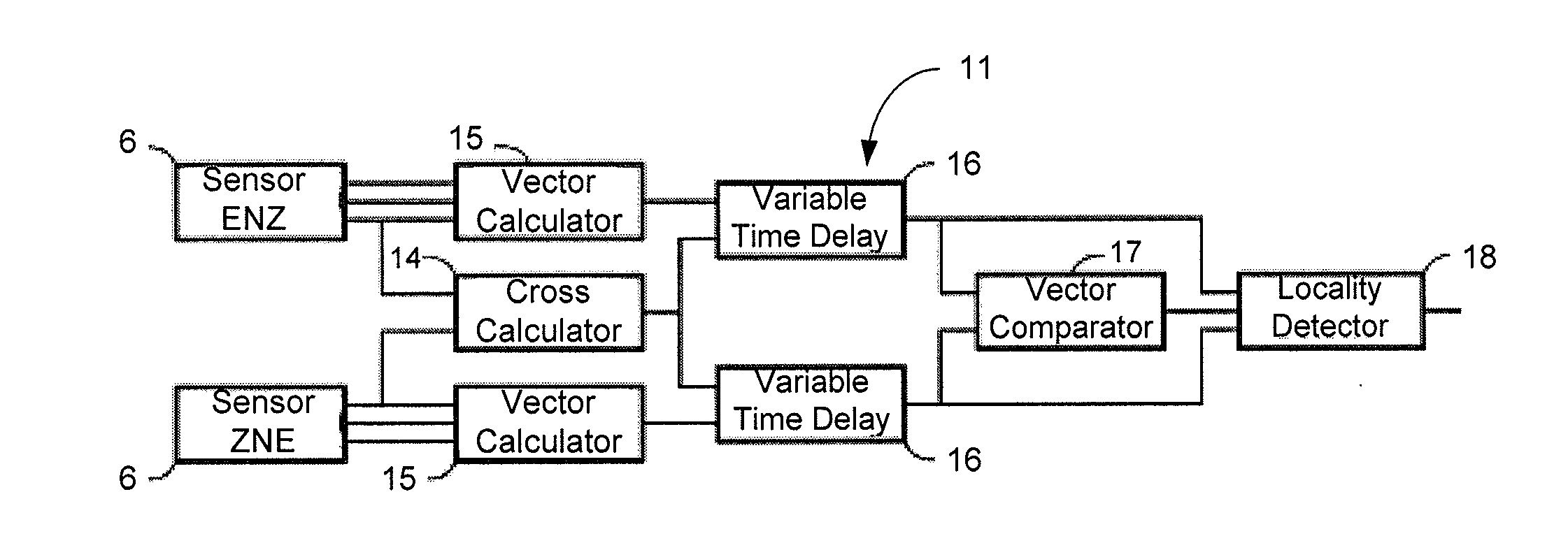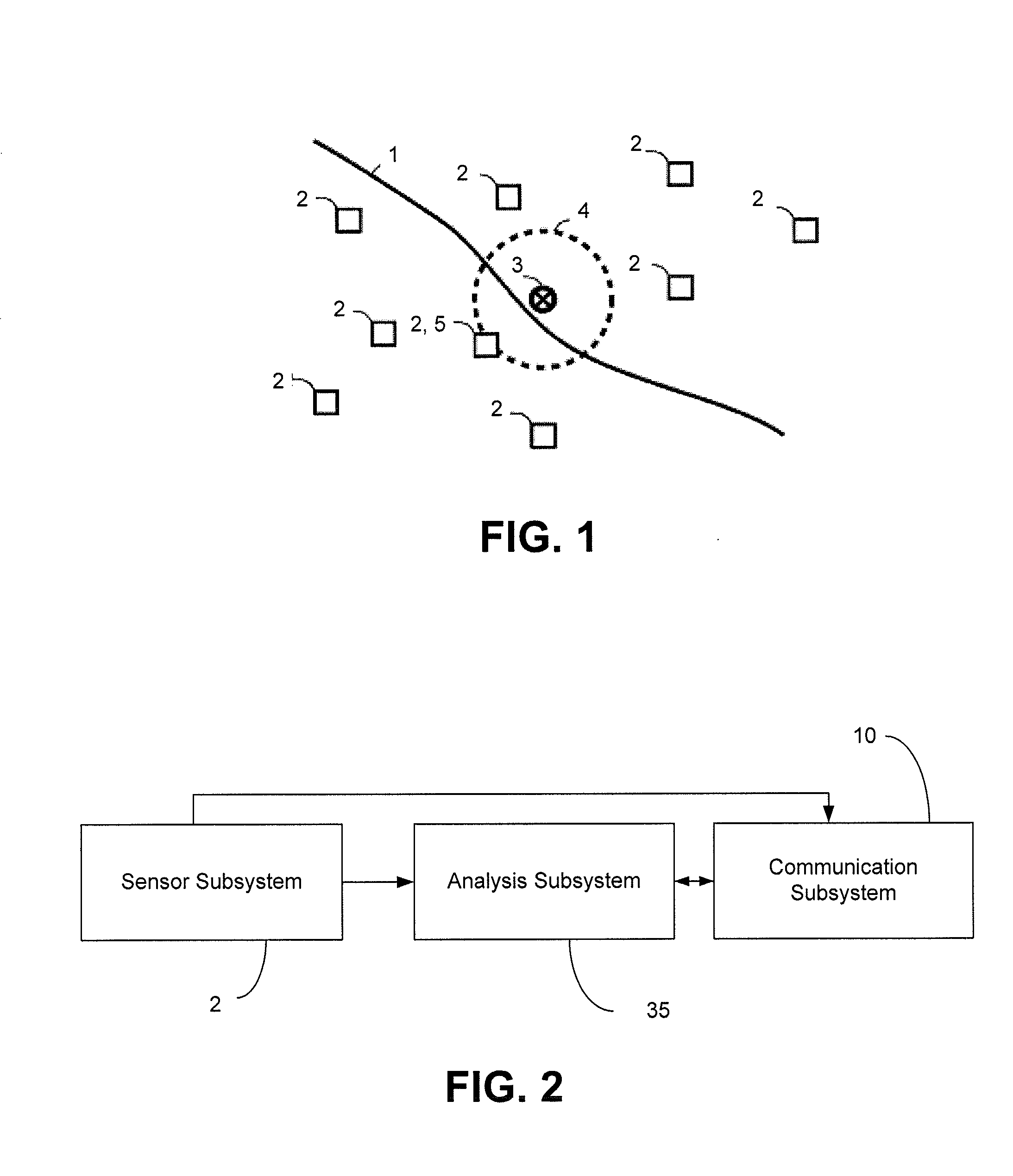Earthquake warning system
a technology for earthquake warning and detection, applied in direction finders, direction finders using ultrasonic/sonic/infrasonic waves, instruments, etc., can solve the problems of unnecessarily increasing computation time, affecting the accuracy of the prediction, and causing drastic differences in the respons
- Summary
- Abstract
- Description
- Claims
- Application Information
AI Technical Summary
Benefits of technology
Problems solved by technology
Method used
Image
Examples
Embodiment Construction
[0082]Referring to FIG. 1, a networked earthquake warning system includes geographically dispersed sites or sensor subsystems 2 placed to minimize the distance to likely earthquake centers near at least one fault 1. All sites are connected via a communications network. When an earthquake occurs at an epicenter 3, the P-wave 4 travels outwards arriving first at the closest site 5, which then sends a signal to all other affected sites 2. The warning time that the EWS can provide is better than the warning time possible with each standalone site, since the signal from the closest site 5 will arrive at the other sites 2 well before the arrival of the P-wave 4.
[0083]Referring to FIG. 2, an earthquake warning system consists of three subsystems, including a sensor subsystem 2, an analysis subsystem 35, and a communication subsystem 10.
[0084]The sensor subsystem 2 includes a controller and one or more ground motion sensors to record and report ground motion in real time. The sensor subsyst...
PUM
 Login to View More
Login to View More Abstract
Description
Claims
Application Information
 Login to View More
Login to View More - R&D
- Intellectual Property
- Life Sciences
- Materials
- Tech Scout
- Unparalleled Data Quality
- Higher Quality Content
- 60% Fewer Hallucinations
Browse by: Latest US Patents, China's latest patents, Technical Efficacy Thesaurus, Application Domain, Technology Topic, Popular Technical Reports.
© 2025 PatSnap. All rights reserved.Legal|Privacy policy|Modern Slavery Act Transparency Statement|Sitemap|About US| Contact US: help@patsnap.com



